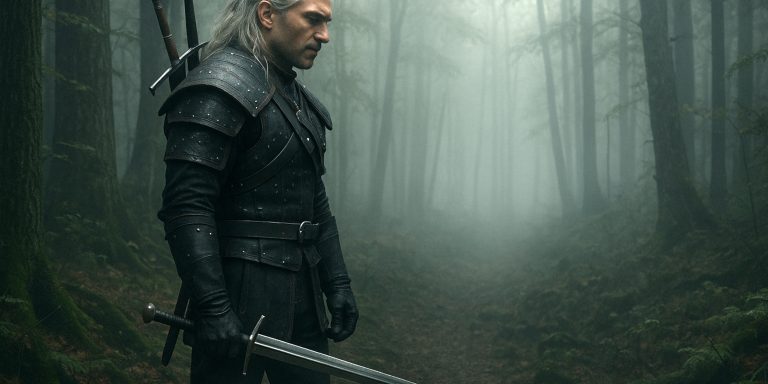
The world of House of the Dragon is steeped in lineage, legitimacy, and the volatile power of bloodlines. Few things provoke more tension within the realm than the existence of Targaryen bastards in the family tree. Whether born in secret or acknowledged with subtle nods, these figures complicate succession, ignite civil wars, and reflect the darker corners of royal life. This article explores every known Targaryen bastard featured or implied within the timeline of House of the Dragon, based on HBO’s adaptation and the lore of George R.R. Martin’s Fire & Blood.
Ser Harwin Strong’s Children with Rhaenyra Targaryen
Jacaerys, Lucerys, and Joffrey Velaryon
- Mother: Princess Rhaenyra Targaryen
- Alleged Father: Ser Laenor Velaryon
- Biological Father: Widely believed to be Ser Harwin Strong
These three sons are central to the political conflict of House of the Dragon. Officially Velaryons, their appearance and timing strongly imply they are the illegitimate children of Harwin Strong, the former heir to Harrenhal and Rhaenyra’s alleged lover. Their legitimacy is constantly questioned, not only by Alicent and her allies but by the realm at large.
Although Rhaenyra insisted on their Velaryon heritage, the boys’ physical traits, brown hair, broad build, stood in stark contrast to Laenor’s Valyrian features. This suspicion gave Otto Hightower and the Greens a key line of attack in the brewing civil war.
Aegon II Targaryen’s Bastards in Flea Bottom
Unnamed Children
- Father: Aegon II Targaryen
- Mothers: Various lowborn women across King’s Landing
- Nickname: “Pale Worms” (a term used by Ser Arryk and Ser Erryk Cargyll)
Aegon II fathered multiple illegitimate children in Flea Bottom during his youth, frequenting brothels and paying little mind to consequence. These children were never acknowledged, but their existence was an open secret among city-watchmen and the royal household.
The series hints at this recklessness during conversations between the twins Erryk and Arryk Cargyll, and through Queen Alicent’s visible disapproval of her son’s behaviour. Though they play no central role in the succession crisis, they offer a glimpse into Aegon’s personal failings and the rot festering beneath the royal façade.
Aegon III’s Possible Illegitimate Siblings
Gaemon “Palehair”
- Claimed Parentage: A bastard son of Aegon II
- Reality: Likely a puppet claimant, identity uncertain
Gaemon Palehair was a child used as a figurehead during the chaos of the Dance of the Dragons. Supported by a group of street prophets and opportunists, Gaemon claimed to be Aegon II’s bastard son. While it is unlikely he truly was, the mere possibility fuelled mobs and further fractured the realm.
Though his claim was short-lived, Gaemon represents the dangers of unchecked rumours and how bastardy could be weaponised during civil unrest.
Daemon Targaryen’s Alleged Bastards
Possible Lowborn Children
- Father: Prince Daemon Targaryen
- Status: Unconfirmed, mentioned only in court gossip
Daemon was a known libertine during his years away from court, especially during his time in the Stepstones and later in the brothels of King’s Landing. Some sources, including Fire & Blood, suggest he may have fathered bastards, but none are named or confirmed in the series. If they exist, they remain hidden or irrelevant to the immediate succession, though future seasons may expand on this possibility.
Rhaenyra’s Later Offspring
After the death of her first husband, Rhaenyra married her uncle, Daemon Targaryen. Their children, Aegon the Younger and Viserys – were legitimate in the eyes of the crown, although their Targaryen-Targaryen parentage caused its own controversies. No bastards are mentioned from this marriage, but speculation endures among fans and maesters alike, particularly around gaps in the historical record.
Context: Bastardy and Legitimacy in Targaryen Politics
Targaryens rarely viewed bastardy as lightly as some of the other great houses. Legitimacy was not just about inheritance; it was tied to prophecy, bloodline purity, and the perceived divine right to rule. A bastard Targaryen was seen not just as a scandal but a potential threat to the line of succession, especially when the realm was already divided.
The Dance of the Dragons illustrates how such suspicions could escalate. The conflict between Rhaenyra and Aegon II hinged in part on the idea that her sons were illegitimate, and therefore unfit to inherit. Those boys, whether Harwin’s or not, were dragged into war because of whispers about their birth.
The Seven Swords Takeaway
In House of the Dragon, Targaryen bastards are not just side-notes. They sit at the heart of dynastic feuds, civil wars, and questions of identity. Whether openly acknowledged or quietly buried, their presence haunts the royal family. Some were raised in luxury under false names. Others grew up in the gutters of King’s Landing. All of them, in one way or another, were shaped by a legacy they could never fully claim.



